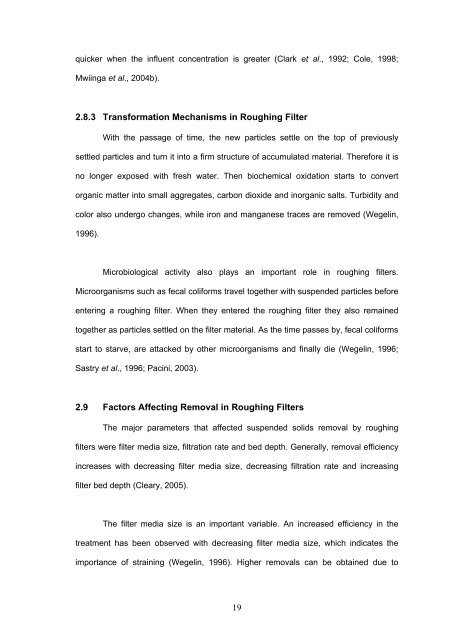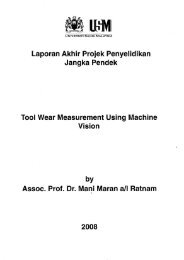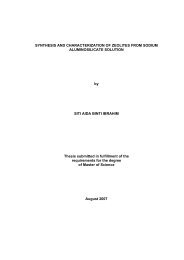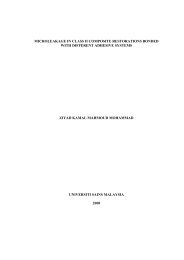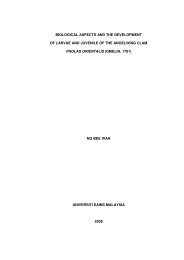a study on the performance of limestone roughing filter - ePrints@USM
a study on the performance of limestone roughing filter - ePrints@USM
a study on the performance of limestone roughing filter - ePrints@USM
Create successful ePaper yourself
Turn your PDF publications into a flip-book with our unique Google optimized e-Paper software.
quicker when <strong>the</strong> influent c<strong>on</strong>centrati<strong>on</strong> is greater (Clark et al., 1992; Cole, 1998;<br />
Mwiinga et al., 2004b).<br />
2.8.3 Transformati<strong>on</strong> Mechanisms in Roughing Filter<br />
With <strong>the</strong> passage <strong>of</strong> time, <strong>the</strong> new particles settle <strong>on</strong> <strong>the</strong> top <strong>of</strong> previously<br />
settled particles and turn it into a firm structure <strong>of</strong> accumulated material. Therefore it is<br />
no l<strong>on</strong>ger exposed with fresh water. Then biochemical oxidati<strong>on</strong> starts to c<strong>on</strong>vert<br />
organic matter into small aggregates, carb<strong>on</strong> dioxide and inorganic salts. Turbidity and<br />
color also undergo changes, while ir<strong>on</strong> and manganese traces are removed (Wegelin,<br />
1996).<br />
Microbiological activity also plays an important role in <strong>roughing</strong> <strong>filter</strong>s.<br />
Microorganisms such as fecal coliforms travel toge<strong>the</strong>r with suspended particles before<br />
entering a <strong>roughing</strong> <strong>filter</strong>. When <strong>the</strong>y entered <strong>the</strong> <strong>roughing</strong> <strong>filter</strong> <strong>the</strong>y also remained<br />
toge<strong>the</strong>r as particles settled <strong>on</strong> <strong>the</strong> <strong>filter</strong> material. As <strong>the</strong> time passes by, fecal coliforms<br />
start to starve, are attacked by o<strong>the</strong>r microorganisms and finally die (Wegelin, 1996;<br />
Sastry et al., 1996; Pacini, 2003).<br />
2.9 Factors Affecting Removal in Roughing Filters<br />
The major parameters that affected suspended solids removal by <strong>roughing</strong><br />
<strong>filter</strong>s were <strong>filter</strong> media size, filtrati<strong>on</strong> rate and bed depth. Generally, removal efficiency<br />
increases with decreasing <strong>filter</strong> media size, decreasing filtrati<strong>on</strong> rate and increasing<br />
<strong>filter</strong> bed depth (Cleary, 2005).<br />
The <strong>filter</strong> media size is an important variable. An increased efficiency in <strong>the</strong><br />
treatment has been observed with decreasing <strong>filter</strong> media size, which indicates <strong>the</strong><br />
importance <strong>of</strong> straining (Wegelin, 1996). Higher removals can be obtained due to<br />
19


